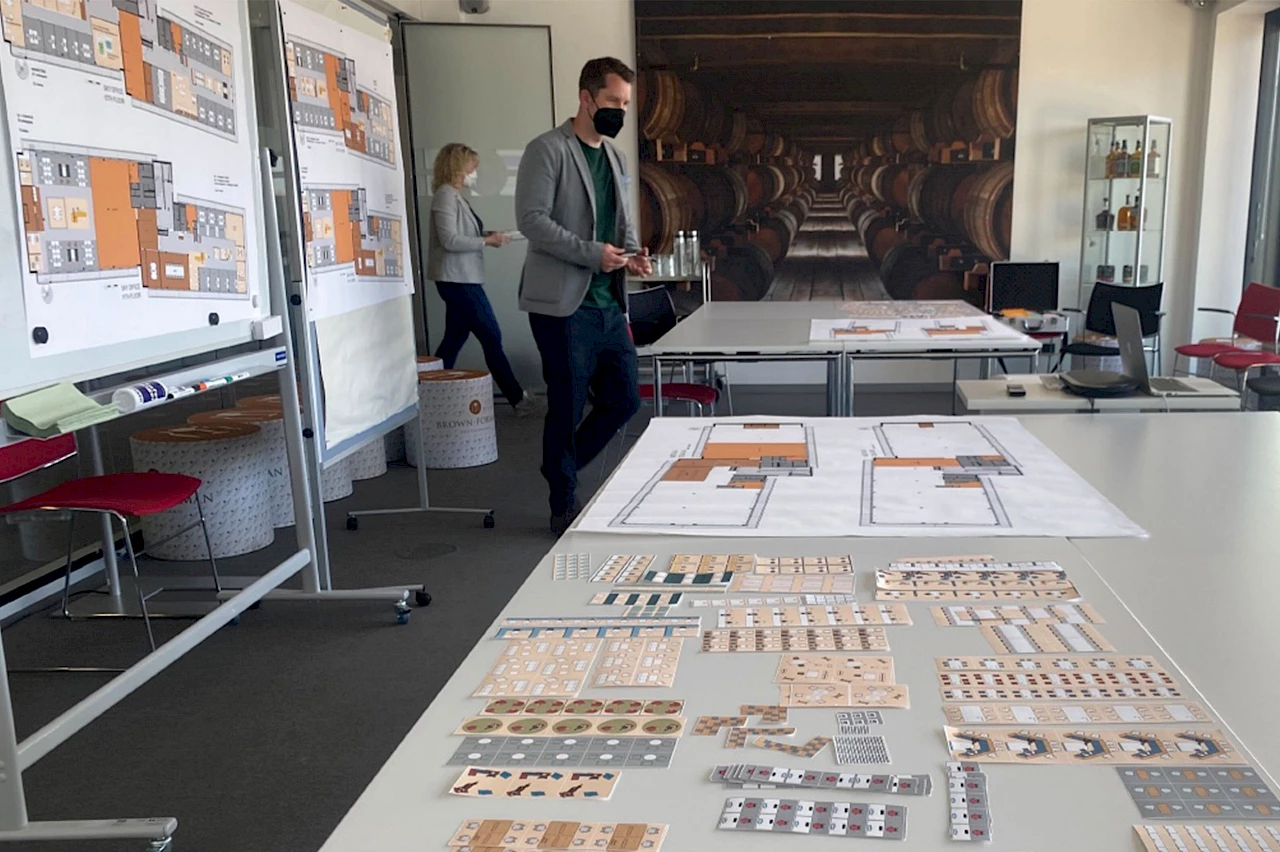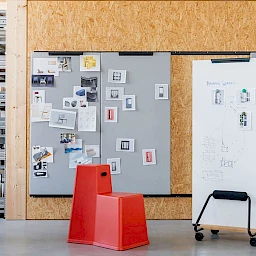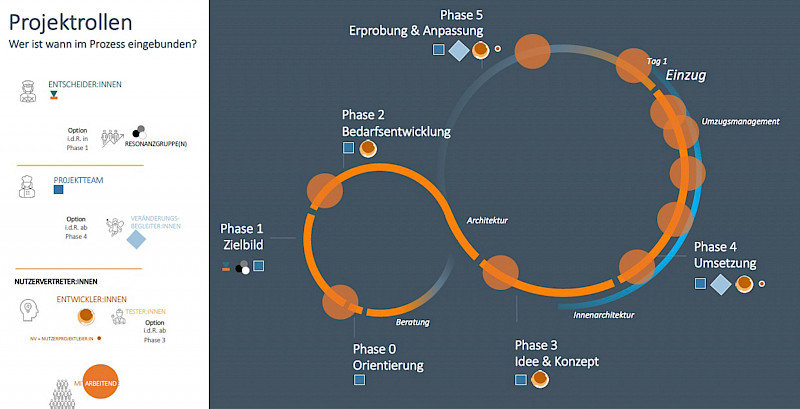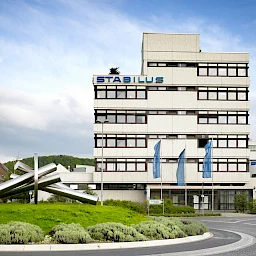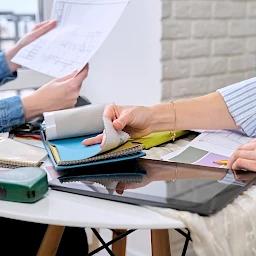New Work and workplace design as a collaborative process: We asked Bernd Fels, co-founder of if5 anders arbeiten and if5 design, how he and his team use co-creation methods, where the method reaches its limits, and what practical advice he has for anyone who wants to try co-creation in their own company. Here are his answers:
Co-creation at if5 anders arbeiten and if5 design
At the start of a project, we often hold orientation workshops to define the degree of participation in the project. The start before the start is a crucial phase in projects. In our view, it is very helpful to take one or two days for a workshop at this stage.
In phase 1 (target vision), we then use online surveys or idea forums, for example. In the online survey, we ask employees how they would organize their ideal working week if they had a free hand. In other words: How many days would they work in the office and what would happen in the office? The idea forum functions as a World Café on site or on a digital whiteboard. A feedback group collects ideas and assigns them to the if5 flower, consisting of organism, space, technology, services, and people at the center, including prioritization. Here, it is possible to think completely freely without any guidelines. Of course, it should always be noted that not everything that is developed here can be implemented later. The results are presented in the “Vision-Goals-Guidelines” workshop – leadership at eye level is the motto, because this is where the results of the survey and the ideas forum come into play. We then conduct another opportunity-risk workshop with one or more of the feedback groups, in which the guidelines in particular are put through their paces. How? Using the dynamic facilitation method. Each participant has a say and can comment on the guidelines. There is no agenda, and what is heard is then “further processed” in the meeting.
Once the target vision has been defined, phase 2 begins: determining requirements. With the help of a working methods and a workplace workshop, employee personas or functions and their typical working methods in a future working week are first determined. This is where developers from the organizational units come into play. Optionally, testers can be added, who are presented with the results by the developers and modify them if necessary. This broadens the basis for acceptance within an organizational unit. The use of testers in the next, third project phase is highly recommended.
In project phase 3 (ideas and concept), we take a playful approach: the puzzle workshop. This is where co-creation plays the biggest role: Within defined guidelines developed and approved by the project team and the decision-making committee—such as a sharing quota, the determined space allocation plan including room and space modules—the teams are free to design new working environments on the assigned target area under guidance. An iterative process emerges, often with adjustments to the space allocation plan, because the participants are on a learning journey. Not everything that was defined in advance is still valid. The results of these methods are now presented to the testers, and a further optimization loop may follow (design thinking process). What is appealing about this method is its playful approach and haptic momentum. Here, interior design becomes directly visible to everyone in the target area – even in the form of “that won’t work because ...”. There are many reasons for this: workplace guidelines, architecture, budget, or the guidelines are not suitable. But more importantly, alternatives become apparent, it shows what is possible beyond the desk, and joint solutions are sought and found. Co-creativity can thus give rise to something new.
In the long and important phase 4 of implementation, a wide variety of co-creation methods are used as needed. This depends heavily on the degree of acceptance. Low acceptance requires a lot of change support, while high acceptance requires little change support – but it usually won’t work without any at all. There is a wide variety of methods: hands-on sessions, theme clubs, creative workshops, learning lunches, information markets, floor walks, pulse checks, culture boost groups, work hacks, fishbowls, barcamps, team organization, and even coaching. The right balance is crucial.
The benefits of co-creation
When companies manage to actively involve their employees in projects and maintain transparent communication, this has an enormous impact on employee retention. Those who value active participation in processes will feel even more connected to the company. This is especially true when participation bears fruit. But of course, there are also employees who just want to do their job. Or organizations that are already very advanced in New Work. In these cases, co-creation is not necessarily a measure that strengthens loyalty, but can also be perceived as a tiresome exercise.
And there are certainly tasks and phases in which co-creation is not effective. Or organizations where less co-creation is sometimes more, or where it is simply not desired due to the corporate culture, although in the latter case we are happy to follow up so as not to simply pass up the opportunities offered by co-creation. Ultimately, it is the client who decides.
A tip aside:
Keep part of your furniture budget in reserve before moving in by not furnishing everything right away. Only after moving in does a new working environment begin, and with it the realization that not everything is quite right yet or that something is missing. It’s good to be able to reorder then.
Bernd Fels is co-founder of if5 anders arbeiten, if5 design, and initiator of the spaces4future initiative. He advises and lectures on new working and learning environments. With a degree in economics specializing in environmental economics and spatial economics, he is also interested in sustainable regional and urban development with a particular focus on working, learning, and living environments, as well as related topics such as mobility, logistics, and energy.
Cover photo: if5 anders arbeiten




